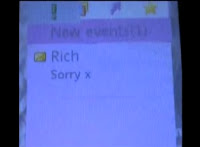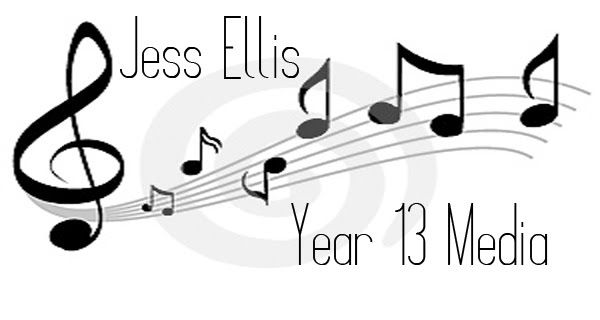The first step I took into creating my own music video was to carry out lots of research, so that I knew exactly what I was creating. I listen to a lot of music, as I have done for most of my life, and so I had a good idea of all types of different genres. So I thought this would be easy. Every day I see music videos, so I figured that I knew the conventions of videos from all genres. However I was proved very wrong. Although knowing about a lot of music videos may have given me a head start, I soon came to the realization that I had a lot to learn. Despite watching the many videos, it became clear that I've never really looked at them in enough depth to truly understand them. There were a lot more codes and conventions than I originally thought! I had to start thinking more about the way videos were filmed, the mise-en-scene, camera angles, close-up shots, still shots, camera movements and much more!
To get a better understanding of these conventions, I thought I would take a look at some theories put forward by Andrew Goodwin and John Stewart:
Andrew Goodwin
The visuals illustrate, amplify or contradict the lyrics.
The visuals illustrate, amplify or contradict the music.
Genres are complex and diverse in style and iconography.
Close-ups of the main artist or vocalist.
Voyeurism is present in many music videos.
There are likely to be intertextual references.
John Stewart
Lots of close ups lighting.
Visual references should come from a few sources, such as art and fashion.
Mise-en-scene should emphasise an aspirational lifestyle.
The essence of intertextuality.
So to sum up, these are the conventions that a music video needs to be when of the pop/rock genre:
◦ Close ups
◦ Camera movements that enhance the music and the lyrics
◦ Lighting
◦ Accurate editing
◦ A clear interpretation of the lyrics
◦ Visuals should echo the lyrics
◦ Iconographic mise-en-scene
So how did we manage to incorporate some of these conventions into our video?
 |
| The video above shows the shots that I am going to evaluate. |

This is the very first shot from our video. The
camera tilts up, from Annabel's foot until she
is completely in the frame. We thought this
was a good shot to start with, as it creates a
sense of place for the viewer, by starting on the
pavement and gradually revealing the bridge.

We included some close-ups in our video as well,
like this one. We thought this close up was effective
as it shows her immediate emotion after seeing her
boyfriend with another girl. This creates a sense of
empathy for the viewer, as they can relate and
interact with the character with close ups like these.

We decided very early on that we wanted to include
a split screen somewhere in our video, as we think
they look really effective. We thought that by having
both the characters on the floor with their heads
down would convey the sense of heartbreak, and
their feeling of sheer lose.

Another element we decided to add to our video was
a slow motion shot. This takes place when Annabel
remembers what happened on the bridge (right at
the beginning of the video). We thought that by
having it in slow motion it would emphasise the
memory, as well as imply that the slow memory is
extremely painful for her (as if she can remember
every second of it).

This is another memory, and we thought it would
look effective in black and white, as it portrays the
memory better. While this shot plays the lyrics are
'your the only thing that I love', which is an
example of how the visuals echo the lyrics (as the
memory is of when they were blissfully happy, and
she was the one that he loved). The mise-en-scene
of this shot also conveys the upbeat atmosphere, as
(despite the fact it is in black and white) you can
see the sun and it is a beautiful location.

Here is another example of the visuals echoing the
lyrics. As this shot appears the lyrics are 'just
because I'm sorry doesn't mean I didn't enjoy it at
the time', emphasising and echoing that he is sorry
for what happened.

In this scene, we thought we would have a go at
creating the sense of them walking towards each
other. To do this successfully we filmed Rich on
the left side of the camera, and Annabel and
Rishan on the right hand side. We made these
shots into quite a few cuts, and so it flicks from
one to the other, given the sense that they are
getting closer and closer, building up tension and
suspense until they finally meet.

We certainly picked the right day to film in London!
The weather was exactly what we hoped, lovely
and bright. This natural lighting conveys
Annabel's sense of content as she has moved on.
The last shot of Rich is still bright, however he is
slightly in the shade, and dressed in black, which
conveys the idea that he is not content. You can
see him in between Annabel and Rishan in this
shot, also conveying sense that he has been left
behind and his sense of utter lose of hope.
How did your ancillary tasks convey these conventions?
Since the first time we researched magazine adverts, we immediately loved this Plan B
advert. We thought that it suited our genre, and also our story line. When planning our
cover this was like our inspiration! However as we started making progress, we realised
that the completely black background wasn't right for us, and we started playing around
with different techniques. We found this cloud effect, and thought that it fitted perfectly,
as it is almost like the black and white parts of our video. We put Annabel in the
background, and made her slightly transparent to give the effect that she is looking over
him, but is not actually there as her has lost her. Despite our advert not working out
quite the way we planned, by researching so much we had a basis to start with, and we
both think the final product is much better than what we planned!
When creating our digipak, we did not really have an existing model we really wanted it look like, like we did with the magazine advert. We had our own ideas, and just knew we had to follow the same style as the advert to keep the house style. All we knew was that we wanted Annabel to be transparent, overlooking him, like in the Jimi Hendrix album cover I looked at in my research. By following the same style as in the advert, creating the digipak sort of come naturally. Despite not neccessarily having an exsisting model to follow, I think that our digipak still has qualities of exsisting digipaks. For example, the artist is the main feature of the cover, and the name and group is also featured. These are extremely simple things for the front of a CD, however these are the typical conventions of CD covers. By having just the artist on the front, it makes the cover immediately recognizable. We are both really happy with the final copy, we think it conveys the iconography of the characters, therefore fitting the conventions.





No comments:
Post a Comment